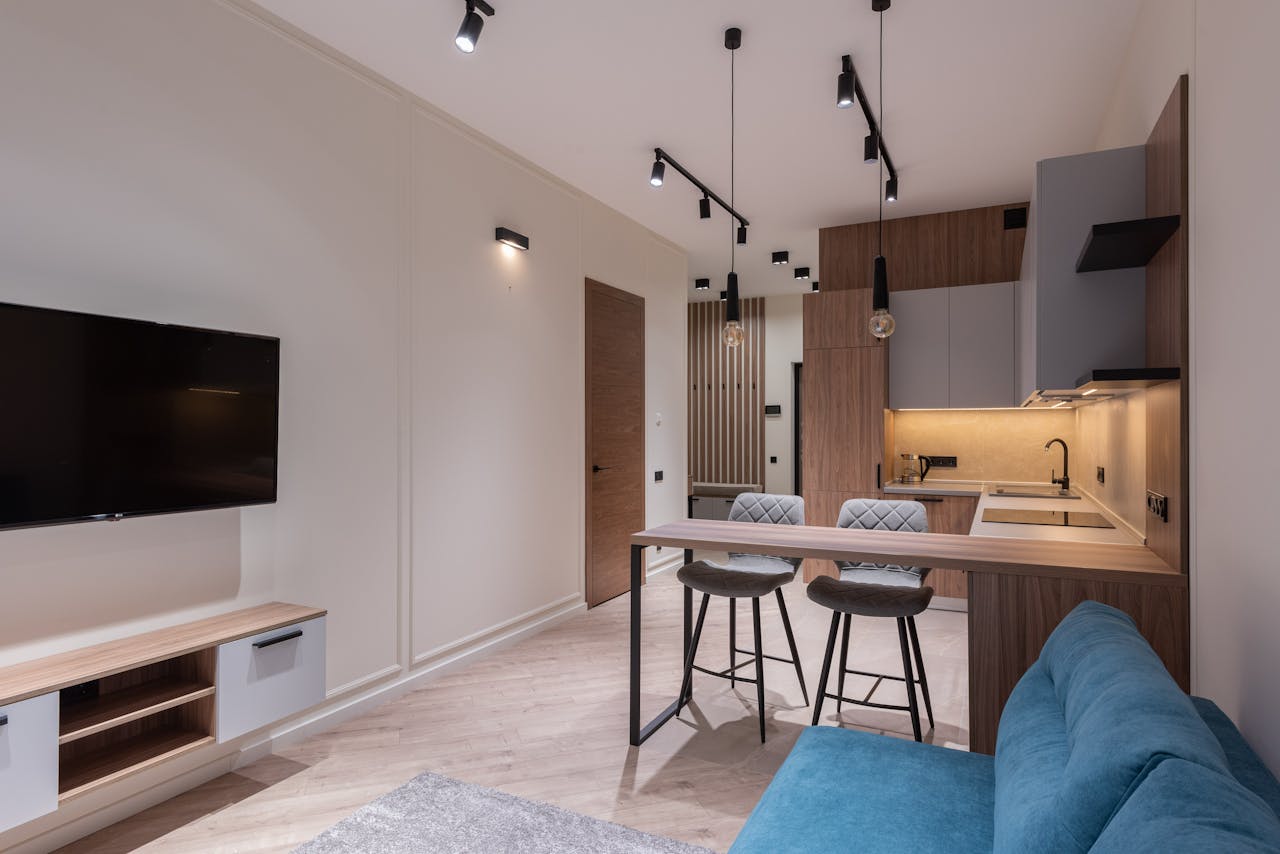
Interior design is about creating places that reflect individuality, functionality, and beauty, not just choosing colors or furniture placement. Each innumerable design style has distinctive qualities, materials, and aesthetics that make them stand out. Knowing various designs can help you express your tastes, whether you\’re remodeling a house, creating a workspace, or simply interested in current design trends.
Here, we explore some of the most popular interior design styles, with examples to inspire your next project.
Modern Style
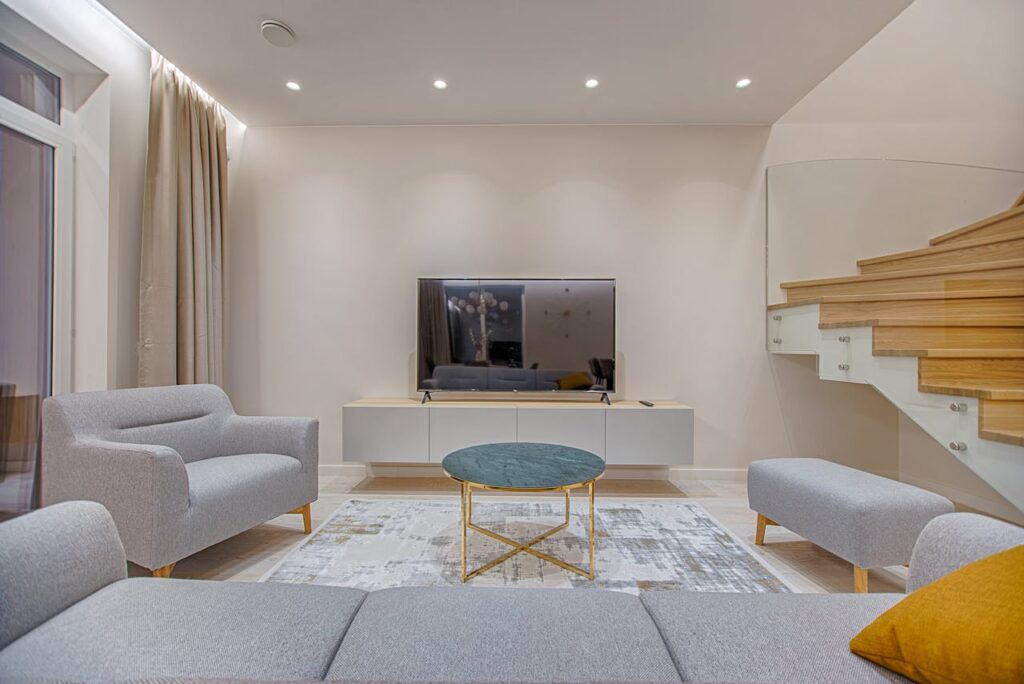
Characteristics
Modern design emphasizes simplicity, functionality, and clean lines. It is rooted in the modernist movement of the early to mid-20th century, focusing on eliminating unnecessary details and celebrating a \”less is more\” philosophy.
Key Elements:
- Neutral color palettes (white, gray, black, beige).
- Minimalist furniture with clean lines.
- Use of natural materials like wood, leather, and stone.
- Open floor plans to create spaciousness.
Example:
Imagine a living room with a sleek L-shaped sofa in a neutral shade, a glass coffee table, and a large abstract painting on the wall. The room is illuminated by a statement pendant light, and the flooring is natural wood, enhancing the simplicity of the design.
Contemporary Style
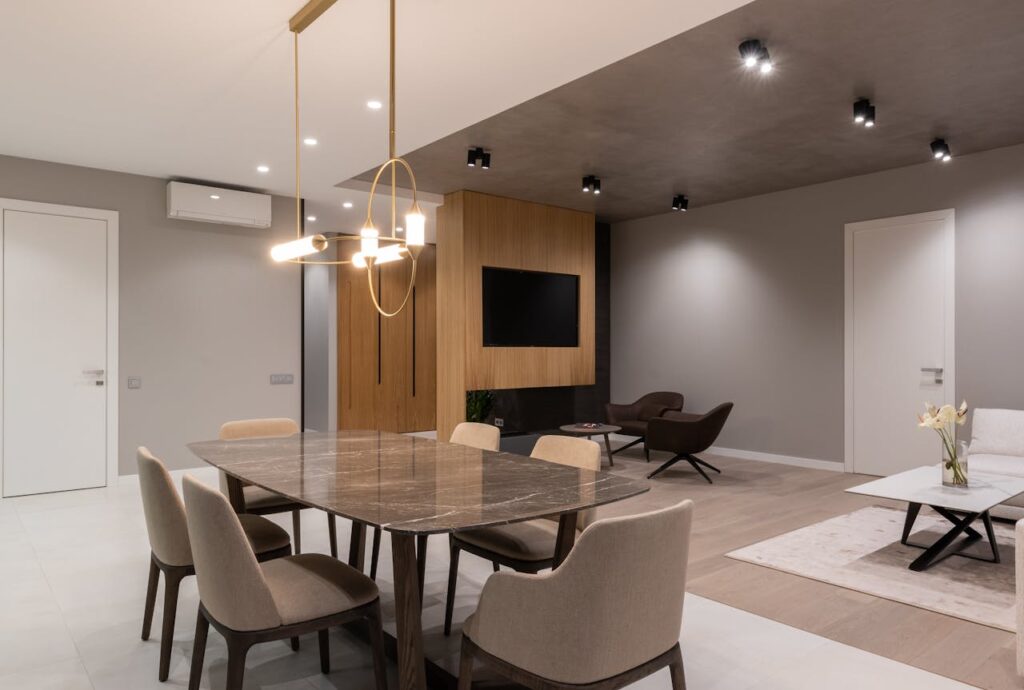
Characteristics
Often confused with modern design, contemporary style is more fluid, focusing on current trends. While it shares the minimalist approach of modern design, it’s more eclectic and adaptive.
Key Elements:
- A mix of textures, such as metal, glass, and fabric.
- A balance between comfort and sophistication.
- Neutral tones accented with bold colors.
- Statement furniture pieces or lighting fixtures.
Example:
Picture a dining area featuring a bold, sculptural dining table surrounded by plush upholstered chairs. A geometric chandelier hangs above, and the walls feature large-format tiles or textured wallpaper.
Industrial Style

Characteristics
Industrial design draws inspiration from warehouses, factories, and other industrial spaces. It celebrates raw and unfinished materials, creating a rugged yet chic ambiance.
Key Elements:
- Exposed brick walls, ductwork, and beams.
- Metal and wood furniture.
- Neutral, earthy color schemes.
- Use of vintage or reclaimed materials.
Example:
A loft apartment with exposed brick walls, a large leather sectional, and a reclaimed wood coffee table. Pendant lights with metal finishes hang from the ceiling, and a large vintage clock serves as wall decor.
Scandinavian Style
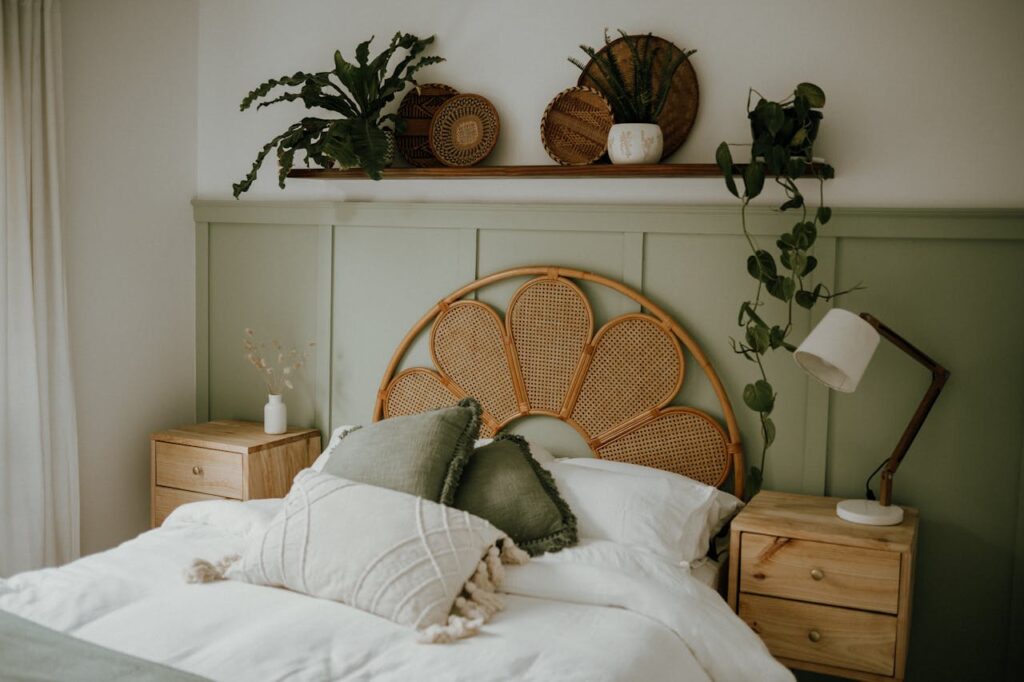
Characteristics
Scandinavian design is rooted in simplicity, functionality, and a connection to nature. It emphasizes light, airy spaces and minimalist décor.
Key Elements:
- Light-colored wood and white walls.
- Simple, functional furniture.
- Cozy textiles like wool and sheepskin.
- Incorporation of natural light and greenery.
Example:
A bedroom featuring a platform bed with white linens, a sheepskin rug on light wooden flooring, and a few potted plants on a minimalist bedside table. The room is flooded with natural light, emphasizing its clean and serene vibe.
Bohemian Style
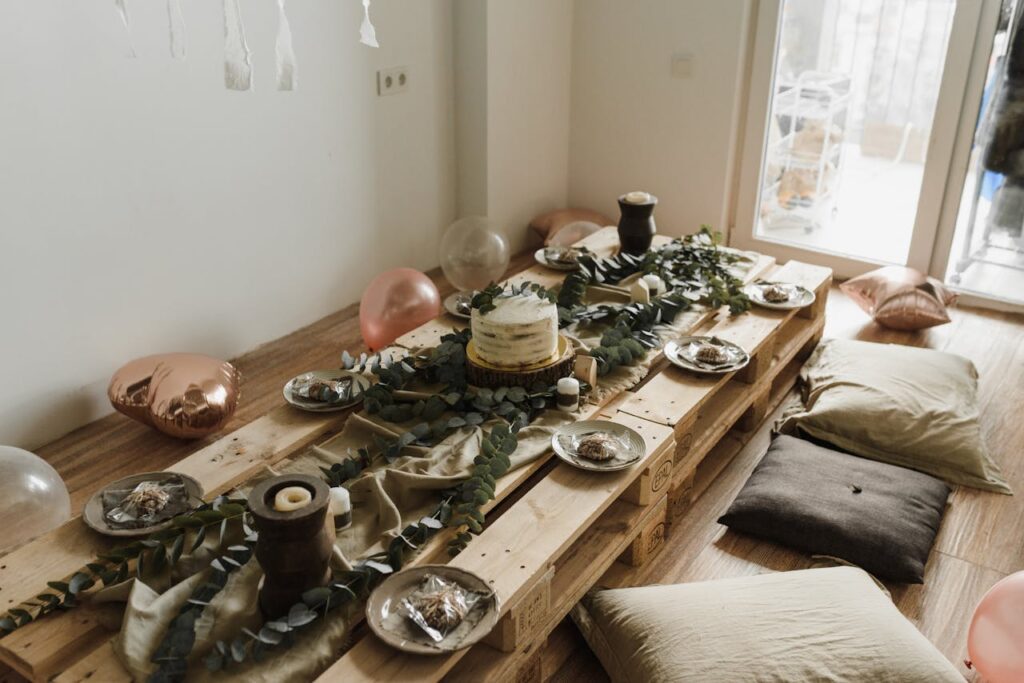
Characteristics
Bohemian, or \”boho,\” design is all about creativity, individuality, and a mix of global influences. It’s a style that thrives on layers, textures, and eclectic décor.
Key Elements:
- Bold, vibrant colors and patterns.
- Layered textiles like rugs, throws, and cushions.
- Vintage and handmade furniture.
- Decor inspired by different cultures.
Example:
A cozy living room with a patterned area rug, a mix of colorful throw pillows on a low-slung sofa, and a gallery wall of eclectic art. Macramé wall hangings and woven baskets add a rustic, artisanal touch.
Traditional Style
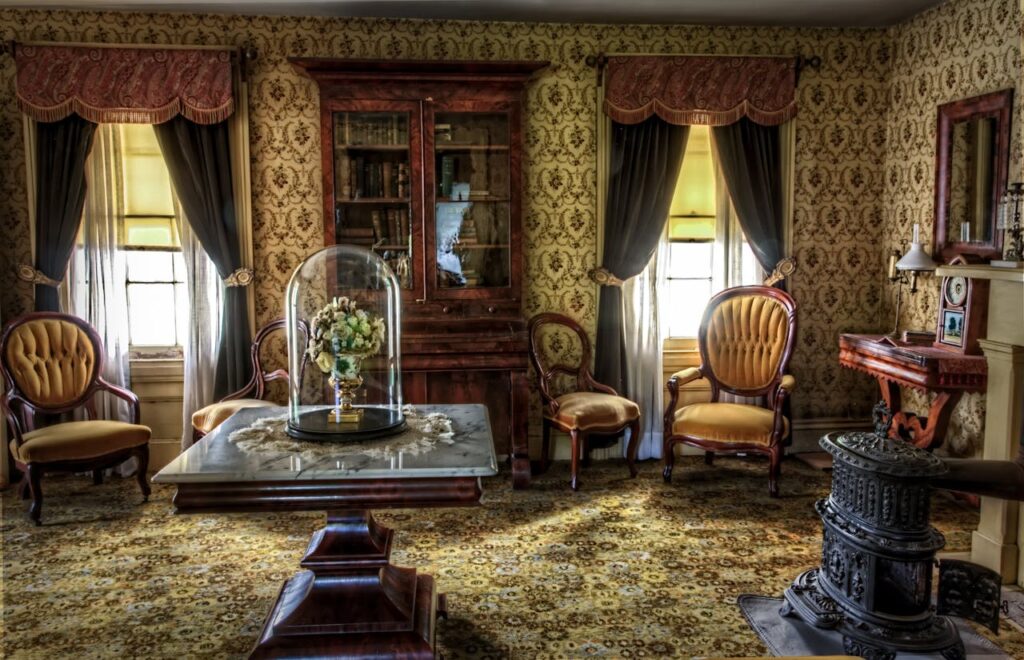
Characteristics
Traditional design is inspired by European decor from the 18th and 19th centuries, offering timeless elegance and symmetry.
Key Elements:
- Rich, dark woods.
- Ornate furniture and décor.
- Formal layouts and symmetrical arrangements.
- Warm color palettes (beige, gold, burgundy).
Example:
A formal dining room with a mahogany table surrounded by upholstered chairs. The space features a crystal chandelier, heavy drapery, and a Persian rug for added sophistication.
Rustic Style
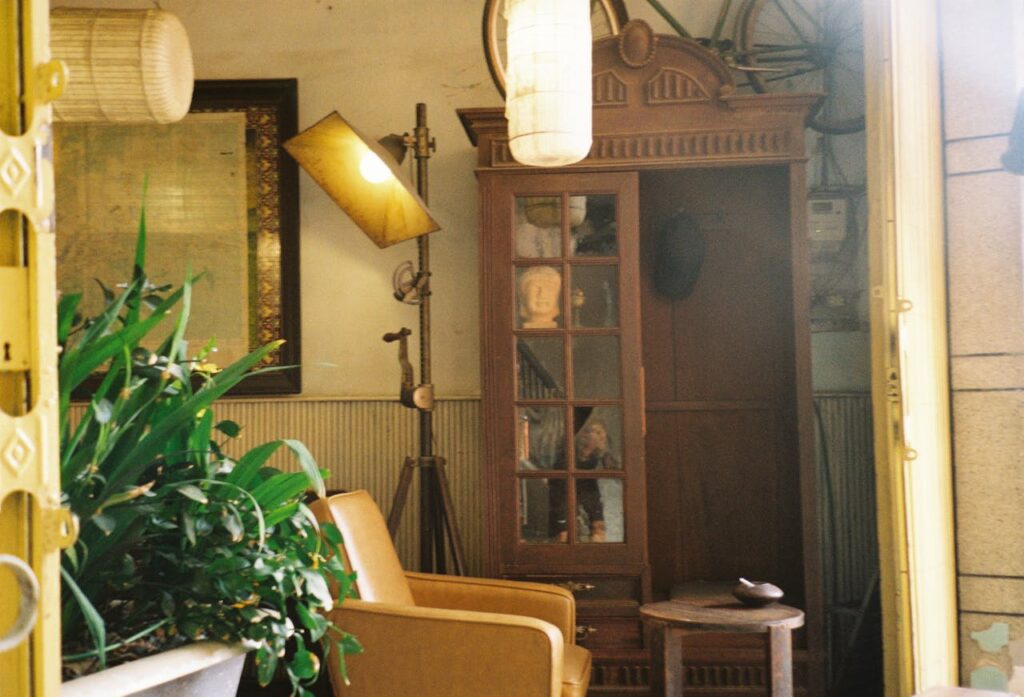
Characteristics
The rustic design embraces the natural beauty and a cozy, earthy atmosphere. It’s perfect for creating warm and inviting spaces.
Key Elements:
- Exposed wooden beams and natural stone.
- Handmade or antique furniture.
- Earthy color palettes with warm tones.
- Textural elements like jute and linen.
Example:
A countryside kitchen with a large farmhouse table, open shelving displaying rustic pottery, and a stone fireplace. Wooden cabinetry and iron hardware complete the look.
Minimalist Style

Characteristics
Minimalism is about reducing space to its essentials. It’s a highly functional design style that focuses on clean lines, open spaces, and a clutter-free environment.
Key Elements:
- Monochromatic color schemes.
- Bare walls and simple furniture.
- Functional decor with no excessive ornamentation.
- Emphasis on space and light.
Example:
A minimalist living room with a low-profile sofa, a single statement chair, and a small coffee table. The room is decorated with a single vase of fresh flowers and a large window allowing natural light to pour in.
Mid-Century Modern Style
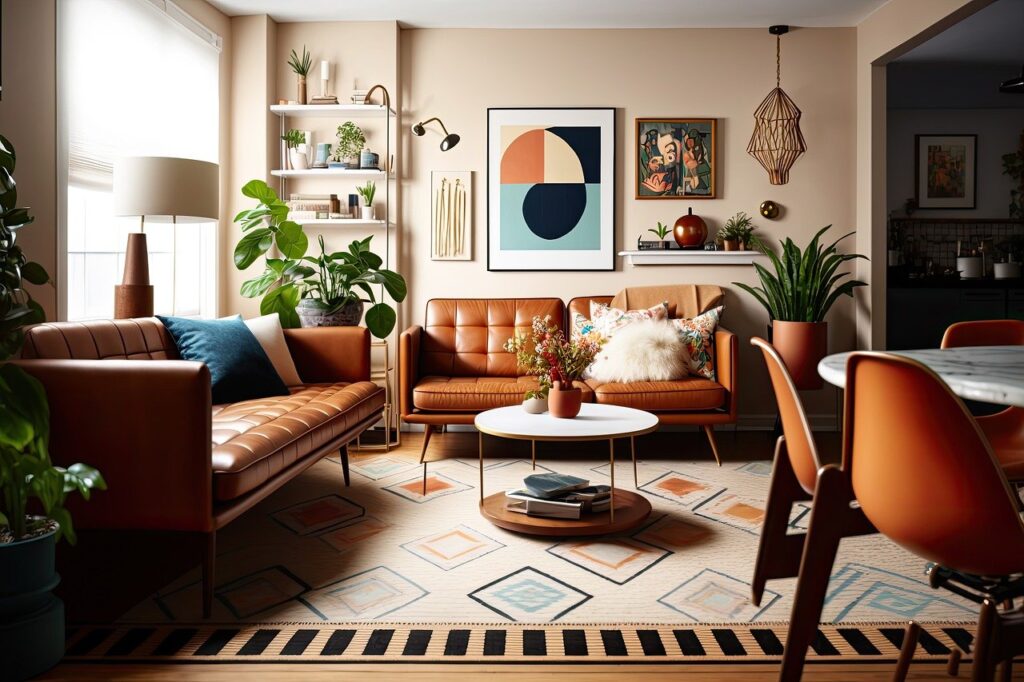
Characteristics
Popularized in the mid-20th century, this style is characterized by its sleek furniture, organic shapes, and a seamless connection to the outdoors.
Key Elements:
- Furniture with tapered legs and clean lines.
- Warm wood tones like teak and walnut.
- Pops of bold color.
- Large windows for natural light.
Example:
A living room with an iconic Eames lounge chair, a teak coffee table, and a starburst clock on the wall. The room incorporates a mix of mustard yellow and turquoise accents.
Eclectic Style

Characteristics
Eclectic design blends various styles, textures, and eras into one cohesive look. It’s a celebration of personal expression and creativity.
Key Elements:
- Mixing old and new furniture.
- Layered patterns and textures.
- Vibrant color schemes.
- Unique, one-of-a-kind decor items.
Example:
A family room with a mix of vintage and modern furniture, bold wallpaper, and a gallery wall featuring both family photos and abstract art. A velvet armchair in a bright color adds a whimsical touch.
Offer endless possibilities to create a space that feels uniquely yours. By understanding the defining features of each style, you can mix, match, or stay true to a specific aesthetic that resonates with you. Whether you’re drawn to the simplicity of Scandinavian design, the raw appeal of industrial spaces, or the artistic flair of bohemian decor, there’s a style to suit every taste.
There are countless ways to create a home that feels like yours with interior design styles. You can mix and match or stick to a particular aesthetic that appeals to you by knowing what makes each style unique. There is a style to fit every taste, whether you are drawn to the bohemian decor\’s artistic flair, the raw allure of industrial interiors, or the simplicity of Scandinavian design.


